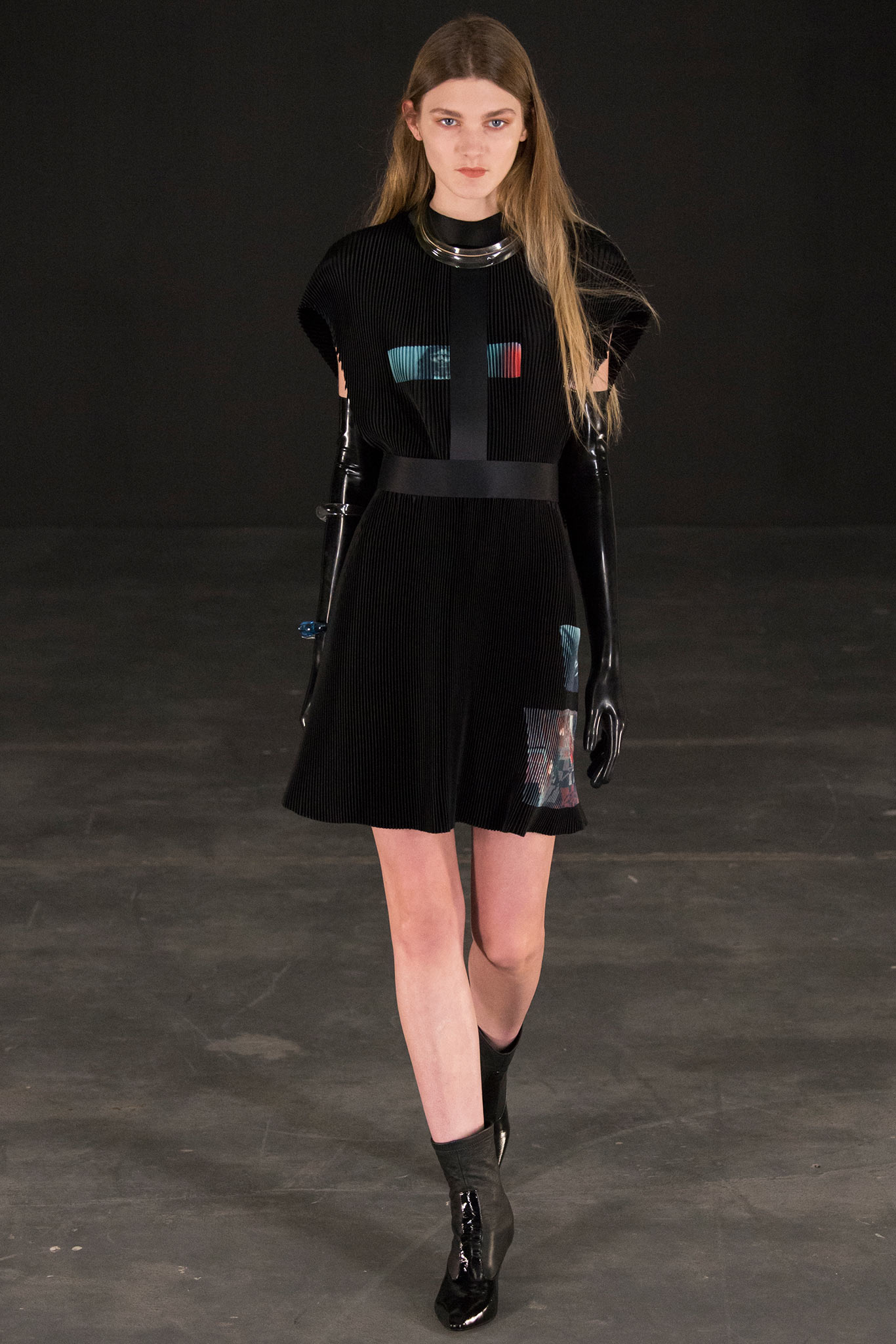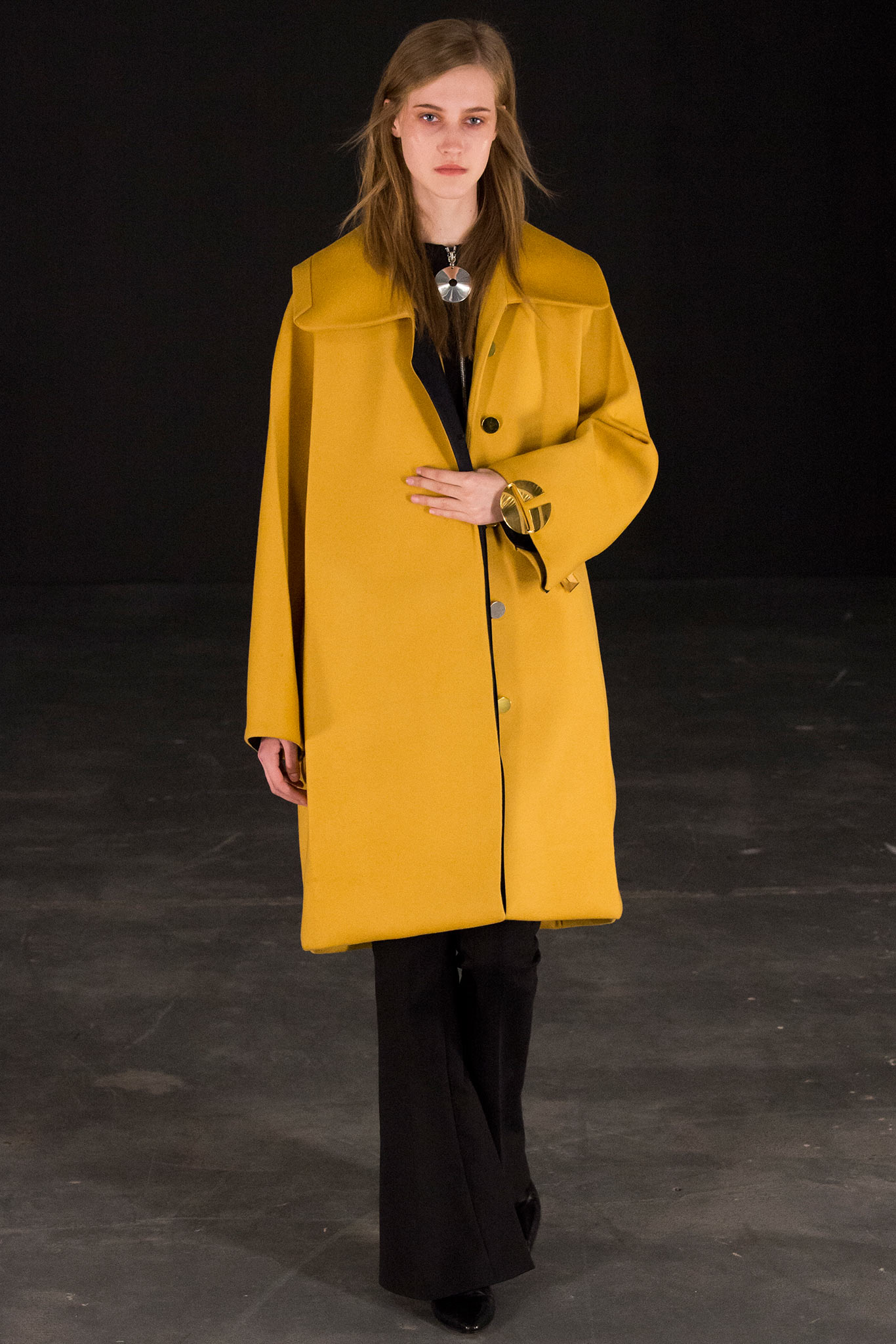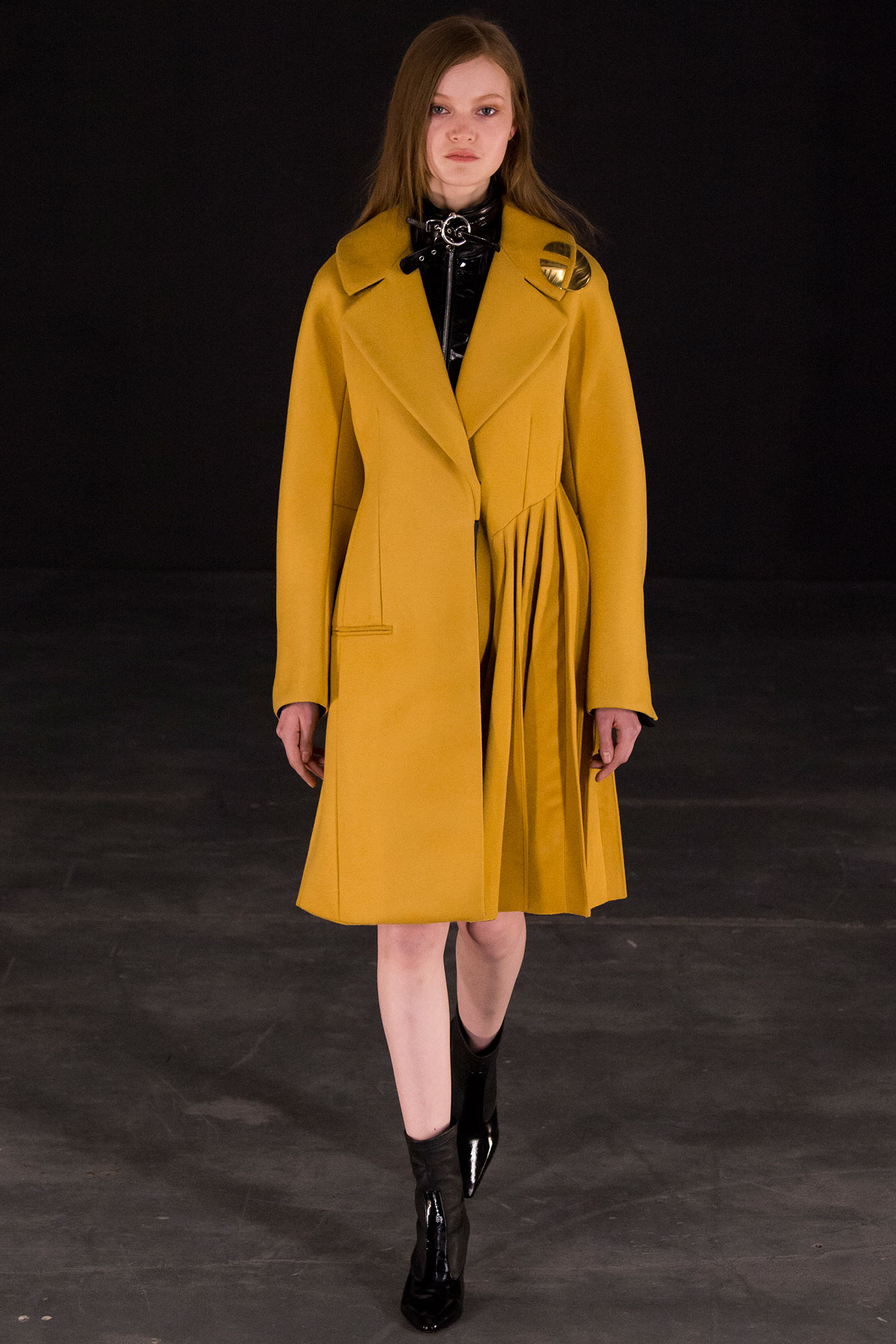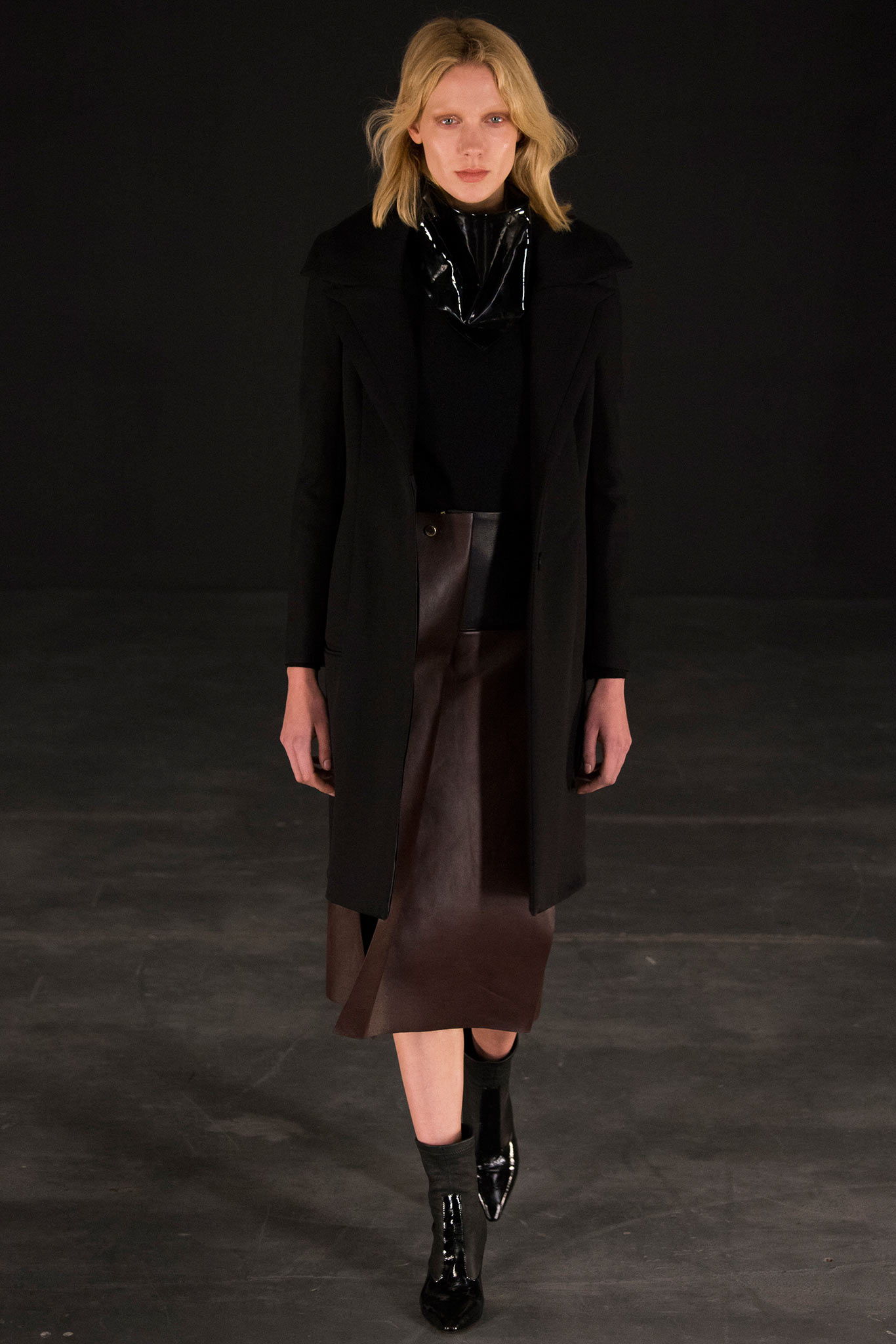
THOMAS TAIT AUTUMN/WINTER 2015-16 READY-TO-WEAR LONDON
The shoe in Thomas Tait’s show was a stiletto skewering a crystal ball. Was that a comment on the impossibility of prediction with this designer? After all, who can ever really tell what’s going to happen with—or to—Thomas Tait? That was a point he made very clear with his show today, the first since he scooped the first edition of the LVMH Prize: 300,000 euros and a year’s worth of mentoring. It’s already paid off. “The money helped me get out of trouble and catch up on production, and the mentoring found me three factories in Europe,” Tait bottom-lined.
But his show hardly felt like a celebration. It was more like a deadly serious statement of intent: I refuse to be a cliché. As the audience filed down stairs into the subterranean gloom of an abandoned car park off Marylebone Road, an absence was obvious. There was no baying pit of catwalk snappers. No photographers at all. (The house would supply images later.) But there was noise: a grinding industrial throb that acted as an overture to one of the most aurally stupendous soundtracks to ever bend these ears at a fashion thing. (For the record—because a record really must be kept—Frédéric Sanchez mixed “Holy Land Explosion” by Francis Kuipers, “Le Saint Guidon” by Monolithe Noir, and “Red Sex” by Vessel.) And then the models began to emerge, at first in total darkness, and then following bridges of light that lit up as they walked, kind of like the way Michael Jackson illuminated pavestones in the “Billie Jean” video. But he danced, while these women moved through the shadows at the glacial pace of some eldritch ritual. “I wanted to slow things down,” Tait explained afterward. “My shows were always so fast.” And that’s also why he’d shed all the other hurry-up of a conventional fashion show.
And so to the clothes. They loaned themselves to the darkness. Tait’s not so given to talking about influences, but he did mention the photographer Gregory Crewdson, “for the way he elevates a semi-colloquial feeling into eeriness.” A reference point that seemed even more fitting might have been Crewdson’s kick-starter, David Lynch. One of these looks—a mink coat over a cashmere sweater and satin wrap skirt—could have been plucked from the closet of Dorothy Vallens in Blue Velvet. And Tait’s appetite for exaggerating the average—a giant-collared taffeta blouse, a huge-cuffed poplin shirt, trousers that swept the floor, enormous coats that dwarfed the body, utility jackets writ über-large—felt Lynchian. So did the collection’s struggle between restraint and release. There were tight little Pleats Please moments: Micro-pleated satin printed with screen grabs from Dario Argento films contrasted with those profligate volumes. And then there was the straightforwardly fetishistic lure of fitted leather coatdresses, festooned with zippers attached to oversize ring pulls. Their underarms were lined with mink. Think that mink, pull that ring…and ponder that skewered crystal ball.


































